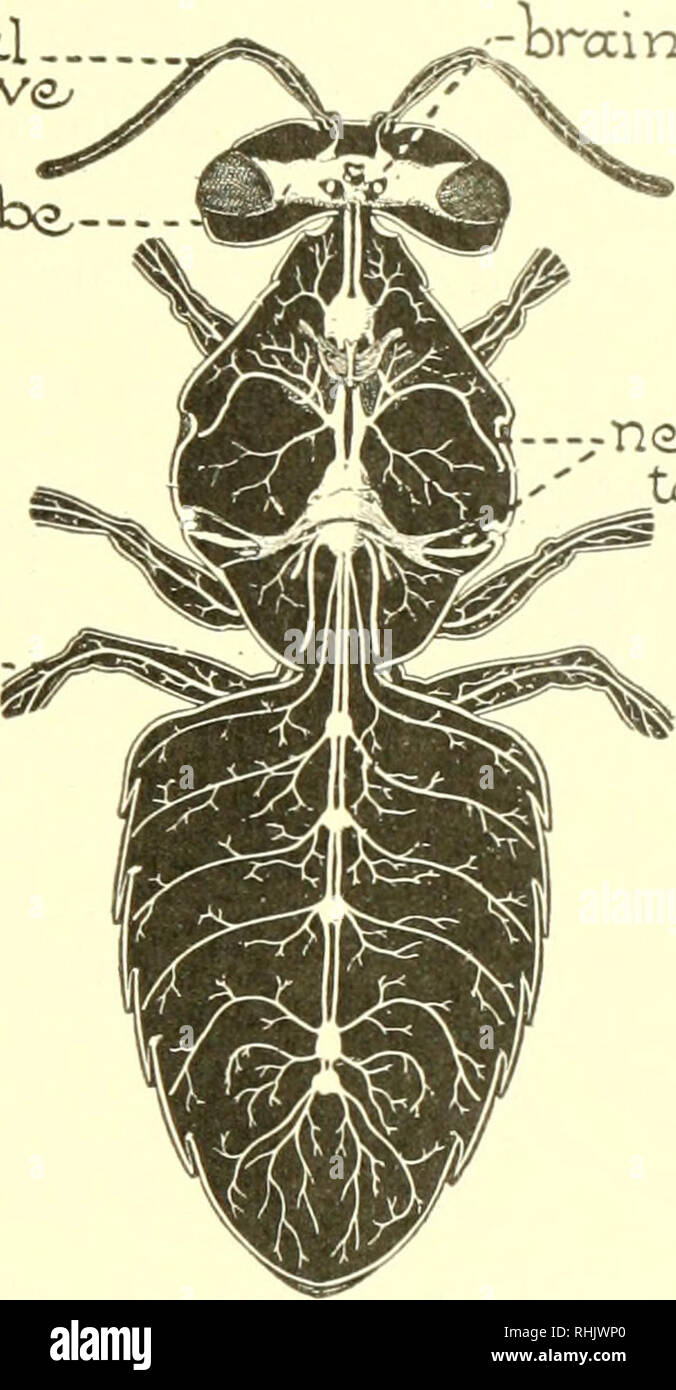. Biology; the story of living things. THE POPULAR INSECT PLAN 211 The Nervous System The nervous system of the bee is well developed, consisting of a series of ganglia, forming a double ventral nerve cord with a dorsal cerebral ganglion (brain), antennal. rain. optic loloe to -vin^? to leg connected by a circum- esophageal nerve ring with a subesophageal ganglio7i directly underneath it. Although typically in a segmented animal there should be one ganglion for each segment, we find fewer ganglia than seg- ments in the adult bee. This is because certain of the ganglia have fused, there being s

Image details
Contributor:
Library Book Collection / Alamy Stock PhotoImage ID:
RHJWP0File size:
7.1 MB (290 KB Compressed download)Releases:
Model - no | Property - noDo I need a release?Dimensions:
1140 x 2192 px | 19.3 x 37.1 cm | 7.6 x 14.6 inches | 150dpiMore information:
This image is a public domain image, which means either that copyright has expired in the image or the copyright holder has waived their copyright. Alamy charges you a fee for access to the high resolution copy of the image.
This image could have imperfections as it’s either historical or reportage.
. Biology; the story of living things. THE POPULAR INSECT PLAN 211 The Nervous System The nervous system of the bee is well developed, consisting of a series of ganglia, forming a double ventral nerve cord with a dorsal cerebral ganglion (brain), antennal. rain. optic loloe to -vin^? to leg connected by a circum- esophageal nerve ring with a subesophageal ganglio7i directly underneath it. Although typically in a segmented animal there should be one ganglion for each segment, we find fewer ganglia than seg- ments in the adult bee. This is because certain of the ganglia have fused, there being seven in the ventral ner^'e cord of the bee. From each of these nerves efferent fibers ex- tend to the muscles while afferent fibers from sense cells end in the ganglia to make up the reflex arc previously described (page 195). Not all co-ordi- nation of muscles is controlled by the brain, for a headless bee will still walk and experiments have shown that the body ganglia are independent centers of control over the appendages. Insects of the order Hymenoptera, to which the bee belongs, have the best brain development of any of the insects, a fact that seems to be correlated with their complex social habits and their keen senses.. Nervous system of worker bee. Why are the ganglia in the thorax so much larger than those of the abdomen? Note that the brain is on the dorsal side, the esophagus (not shown) passing between the two nerves that connect it with the first thoracic ganglion. (After Snodgrass.) Reproduction and Life History Although the workers possess undeveloped ovaries, all the eggs are laid by the fertile female or queen. While a worker may live about six weeks in summer and never more than a few months, the queen lives three or fotir years, or even longer. The ovaries of the queen are made up of a number of tubules, in which are eggs in all stages of. Please note that these images are extracted from scanned page images that may have been digitally enhanced for readabil